Japan Nature Leave a Comment
When you think of Japan it is often the gigantic megacity of Tokyo that springs to mind along with its bustling technology fueled society that is so impressive for its ingenuity and innovation. Another well-known image and indeed symbol of Japan is the iconic Mount Fuji that beautifully rises gracefully towards the heavens.
Cherry blossom trees may also feature when you think of this lovely country that has such an array of amazing things to see and do. In any case, in comparison with the wide variety of attractions on show, Japan’s national parks often fall somewhat under the radar of visitors to its shores. Natural wonders abound however and the plethora of incredible sights will leave you astounded at the scenic beauty before your eyes.
Map of national parks in Japan
© OpenStreetMap contributors © Esri — National Geographic
1. Ogasawara National Park
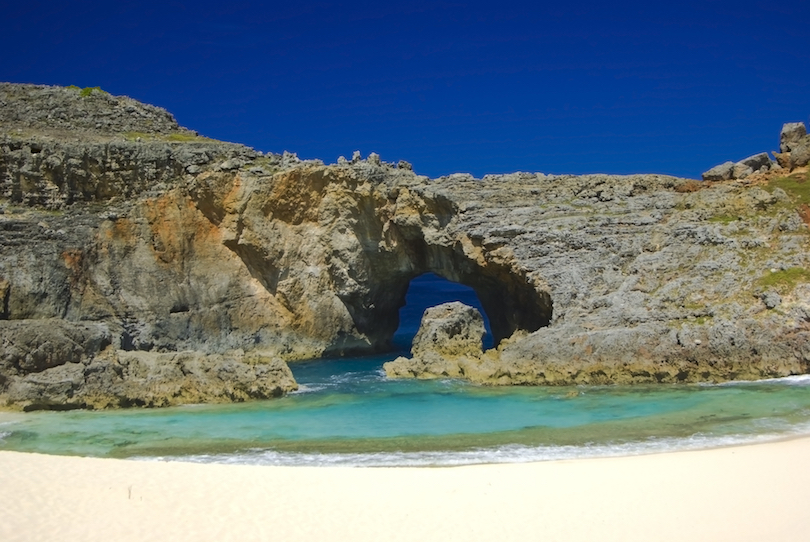 dreamstime
dreamstime
Fiercely contested during the Second World War, the Bonin Islands as they are sometimes known make up the archipelago of islands that form Ogasawara National Park. Only accessible by boat, the long ferry rides to this remote park are definitely worth it such is the incredible beauty on show. Approaching the stunning coves and secluded beaches that dot its shores makes for an amazing and refreshing experience after the long journey. Unique in terms of its evolutionary heritage, Ogasawara is sometimes called the ‘Galapagos of the Orient’ and as such it is fascinating to explore. The turquoise waters surrounding the islands beautifully frame the amazing scenery that contains many species of fauna, flora and mammal that are endemic to this unique environment. The stunning rock arch at Minamijima is just one of the highlights of the national park. With amazing snorkelling, delightful hiking and an incredible variety of water sports for you to enjoy; what are you waiting for? The secluded beauty of Ogasawara is an unforgettable place to visit.
2. Iriomote-Ishigaki National Park
 dreamstime/© Pierre Aden
dreamstime/© Pierre Aden
Famous for the Iriomote wild cat that resides within its boundaries, the secluded islands of this national park are simply marvelous to explore. Lagoons surround some of the islands and their crystal clear waters only add to the beauty of this untamed wilderness as does the subtropical fauna and flora that coat their low-lying interiors. Stupendous views abound and a number of sweeping panoramas are to be found when wandering along the limestone cliffs that infrequently look out over the beaches below. On top of all this, cascades illuminate the dense undergrowth with the delightful sounds they make as well as the lovely picture they paint amidst the trees. Birds circling overhead only add to the picturesque nature of the lovely Iriomote-Ishigaki National Park.
3. Aso-Kuju National Park
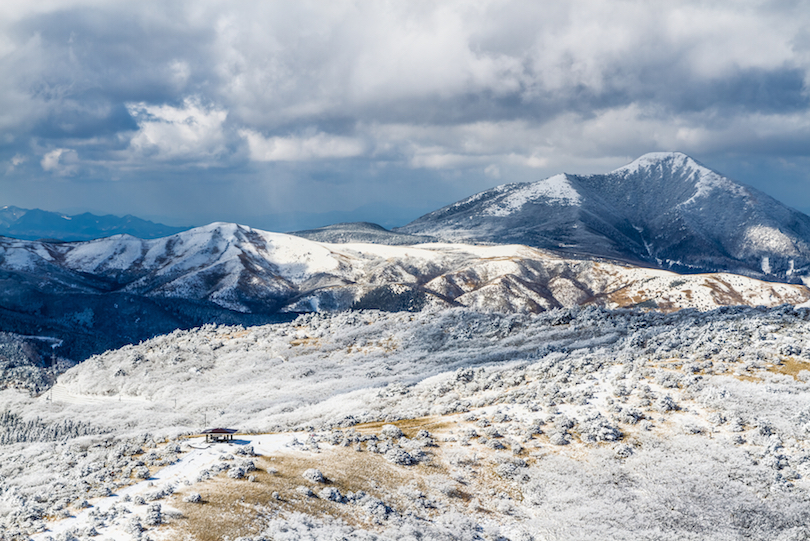 dreamstime/© FaerOut
dreamstime/© FaerOut
Named after Mount Aso and the Kuju Mountains, this national park’s beautiful landscapes are dominated by their lofty peaks that rise dramatically from the flatlands surrounding them. Mount Aso, an active volcano, has a lovely caldera that visitors can stroll around and nearby are a number of hot springs that are delightful to bathe in. The volcanic landscape is barren and scarred from lava flows and all the more impressive for it. On the plains beneath the Kuju Mountains are the Kuju Flower Gardens which explode with color and life. Relaxing and refreshing to visit; the gardens’ stunning backdrop of mountains makes it all the more lovely to behold.
4. Towada-Hachimantai National Park
 dreamstime/© Yoshiyuki Kaneko
dreamstime/© Yoshiyuki Kaneko
This mountainous region has a number of lovely trails and paths that make for wonderful hiking through the wilderness. The park changes with the seasons and in winter the snow-covered Juhyo forests are a spectacular and unusual sight to behold. In summer a myriad of colors spring forth and give life to the area through the rich array of fauna and flora that coats the mountains within the park. The volcanic nature of the area means that hot springs can be found within the confines of Towada-Hachimantai and lovely rivers and lakes are also interspersed amongst the never-ending mountains.
5. Yoshino-Kumano National Park
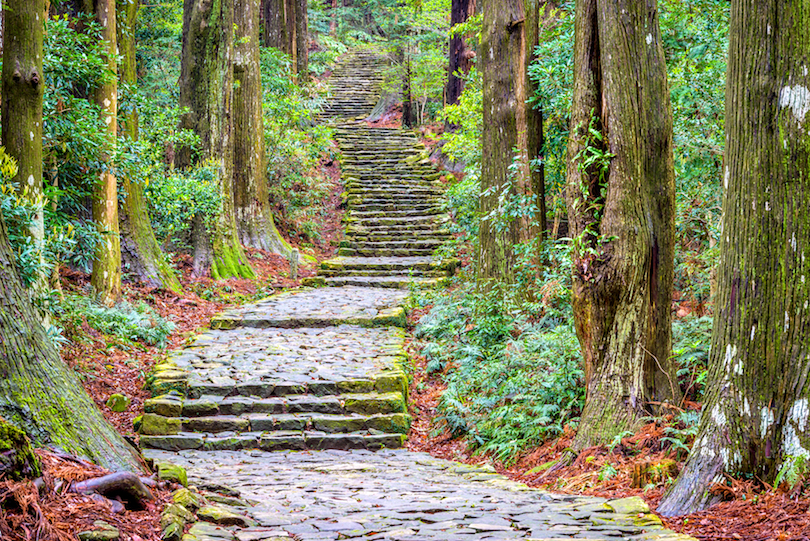 dreamstime/© Sean Pavone
dreamstime/© Sean Pavone
The unique appearance of the rock formations that rear impressively along the coastline of this national park are just one of the stunning natural wonders that you can find in Yoshino-Kumano. Jutting out into the sea, these intriguing geological marvels are fascinating to behold as are the varying landscapes that mix and merge to create a beautiful patchwork of incredible scenes. Peaceful rivers wind their way through steep ravines that turn into mountains before your eyes, forests coat the hills and valleys and in between all this shrines and waterfalls can be found. The sacred Mount Omine that is covered in lush fauna and flora and shrouded in mist is delightful to visit as is Yoshino Mountain which offers up beautiful panoramas of the surrounding area from its summit. Old cobbled paths weave their way through the mysterious forests and following these trails makes for a memorable experience.
6. Kerama Shoto National Park
 dreamstime/© Ippeito
dreamstime/© Ippeito
This idyllic archipelago of islands lying off of Okinawa are bedazzling such is their dreamlike appearance. Tropical in nature, the pristine turquoise waters that surround the islands give way to the creamy white beaches that are so delightful to lounge upon. Lush fauna and flora coat the low-lying interiors of the islands and staying overnight in one of the minshuku on offer is well worth the expense. Offshore, the eclectic colors of the coral reefs attract scuba divers and snorkelers who revel in the beautiful underwater realm that paints such a pretty picture. Sea turtles lazily float by and lucky visitors may catch a glimpse of humpback whales that sometimes pass through its waters. Kerama Shoto National Park is an earthly paradise just beckoning you to come and enjoy it.
7. Nikko National Park

Home to the stunning Toshogu Shrine, Nikko is one of the most beautiful national parks in the country and as such is definitely worth visiting. History abounds in the park and the aforementioned shrine is a must-see as is the Buddhist temple of Rinno-ji. Breathtaking scenery is common in Nikko and visitors are guaranteed to adore all of its amazing sights on offer. The waters of Kegon Falls, for instance, delightfully plunge into the pools below and are strikingly visible amidst the thick forests on either side of it. Just behind the waterfalls is the enormous Lake Chuzenji which so beautifully lies between the mountains and hills that surround it. Of these, Mount Nantai is the most impressive and it mesmerizingly looks out over the lake, picturesque in its splendour. Mount Nikko-Shirane is another amazing feature of the park and its snow-capped peak is distinctive and regal, standing out against the bright blue skies. Unending are the wonders on display in Nikko National Park.Immerse yourself in spiritual traditions, history, and the great outdoors
Nikko National Park, designated in 1934, is one of the oldest national parks in Japan. The large park is just two hours from Tokyo and spans three prefectures. In addition to its convenient location, Nikko features diverse landscapes, many uniquely Japanese with volcanoes, plateaus, lakes, and onsen (natural hot springs).
In addition to its rich natural environment, Nikko National Park has great historical, cultural, and spiritual significance. The park is the site of UNESCO World Heritage–designated buildings in the grounds of Toshogu Shrine, Rinnoji Temple, and Futarasan Shrine. The area is also known for its close ties to the Japanese imperial family and foreign diplomats. Visiting Nikko is an opportunity to encounter a rich history and experience a pristine environment that has been deeply respected and honored for centuries in Japan.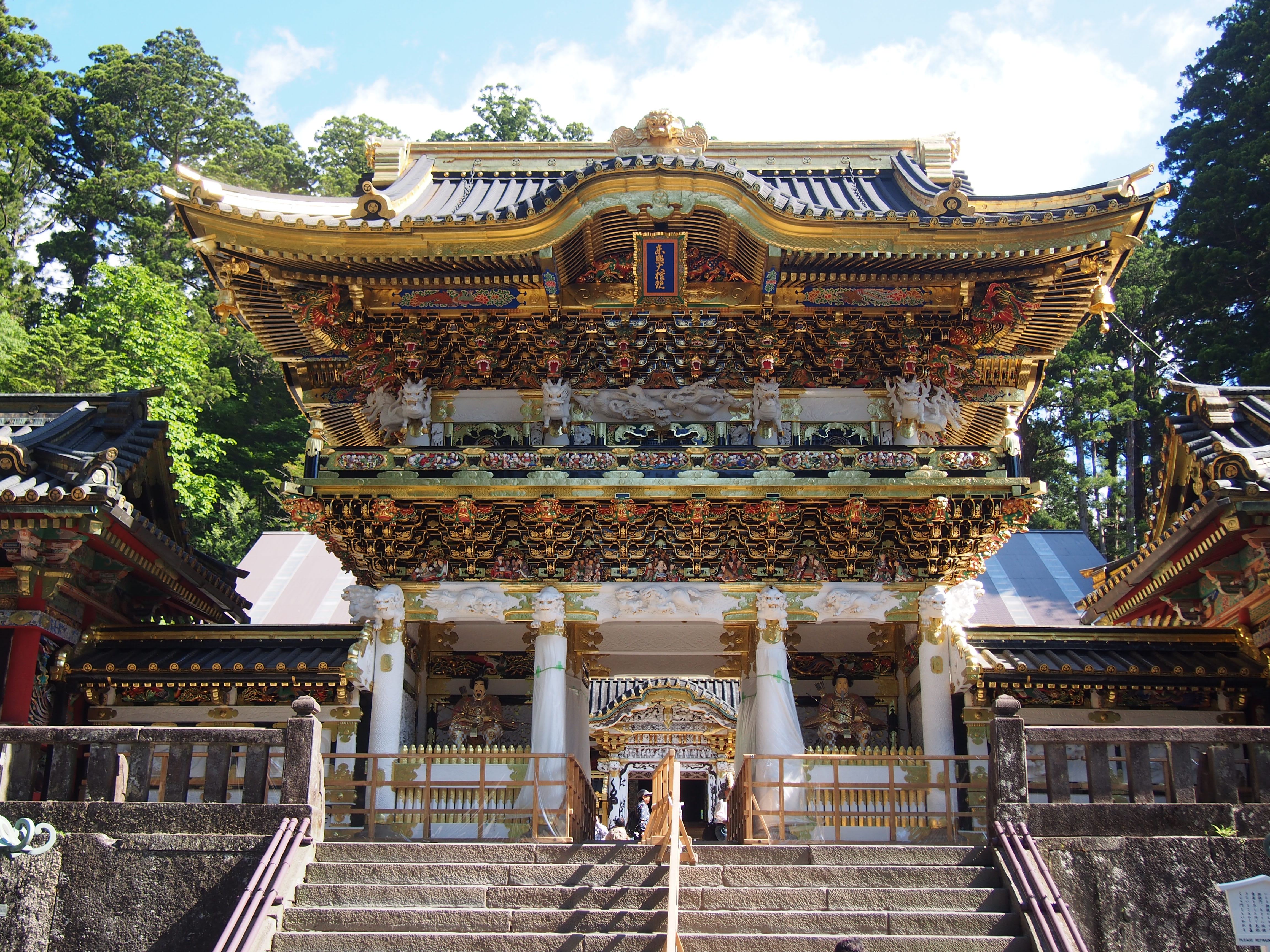
Impressive Nature and History in Oku-Nikko
Beyond Nikko’s historic shrines and temples is Oku-Nikko, a region filled with natural wonders. Ancient volcanic activity associated with Mt. Nantai has contributed to the formation of the Oku-Nikko landscape, including picturesque Lake Chuzenji and the Senjogahara Wetland, known for their excellent bird watching, diverse range of plants, and magnificent waterfalls. Venturing into Oku-Nikko is a great opportunity to enjoy this awe-inspiring natural scenery. Mt. Nantai and the surrounding areas have long been considered sacred. These beliefs, associated with Shinto, and centered on respect for the mountains, are known as Sangaku Shinko.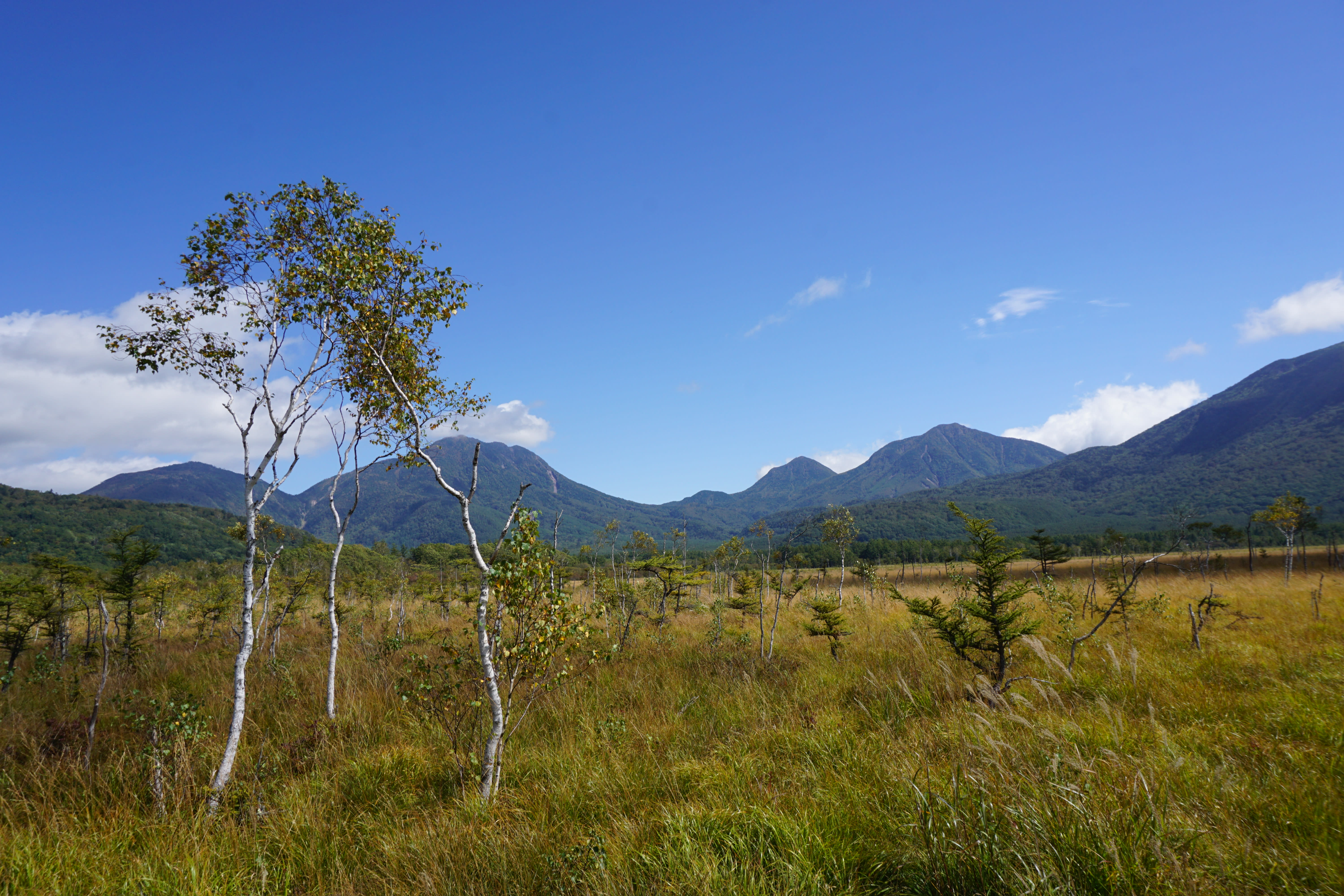
During the Meiji period (1868–1912), Oku-Nikko captured the imagination of foreign residents in Japan and visiting diplomats. The area became renowned for its cool summer climate and gorgeous landscapes among the foreign community in Japan and led to the construction of a number of foreign embassy villas. Guests can learn about the history of this thriving international community by visiting the former Italian and British embassy villas. Gazing out of the windows of these lovingly preserved villas, visitors can appreciate the serene landscape around Lake Chuzenji’s shores. These beautiful views drew the attention of British diplomat Ernest Satow (1843–1929), who famously chronicled his years in Japan from 1862–1869, when the country was changing from rule by Shogunate to Imperial rule, in his book “A Diplomat in Japan.”
More than just beautiful landscapes, Oku-Nikko offers a range of activities, including sightseeing, water sports, and hiking on trails suited to visitors of all fitness levels. The wider range of environments here also supports unique wildlife, including the Japanese serow (Capricornis crispus), variously described as a large chamois or goat-antelope, and the fascinating Japanese macaque monkey.
Peaceful Walks in Nasu and Shiobara
Similar to Oku-Nikko, this region was originally formed by volcanic activity, but unlike Oku-Nikko’s dramatic landscapes, peaceful plateaus and valleys can be found here.
Nasu and Shiobara are topographically distinct, the former known for its scenic mountains and plateaus, and the latter for its valleys. Both boast truly beautiful flora, including varieties of azaleas, lilies, and other wildflowers in the spring and summer. Autumn brings bright crimson and golden foliage, giving way to pure powder snow in the winter.
Mt. Chausu, the main peak in the Nasu mountain range, is an active volcano. A ropeway ride, followed by a hike, gives visitors stunning views of the lush valleys and plateaus below.
Nasu was one of the favorite destinations of Emperor Showa (1901–1989), who came here to escape the oppressive summer heat of Tokyo. The region continues to be a favorite destination of the Japanese imperial family. Indeed, the Nasu Heisei no mori Forest was incorporated into the national park in 2011 at the suggestion of the emperor during the current Heisei period (1989–present). There is an arbor preserved in the forest here, once used by the Japanese imperial family, which is open to visitors. The Nasu Heisei no mori Forest Field Center offers educational programs on the history and nature of the forest and arranges guided tours through the lush, pristine woods.
Much of the land in Nasu is dedicated to farming, notably the cultivation of delicious vegetables and dairy production. It is the largest high-quality dairy producing region on the main island of Japan. Visitors here can enjoy a glass of rich, refreshing milk, the providence of nature in Nasu. This, and all the other experiences, are a joy for all the senses. 
A trip to the Shiobara region is not complete without a walk along the Hoki River ravine in Shiobara Onsen, especially in autumn, when a curtain of crimson and gold drapes the landscape, astonishing all who visit. This landscape also fired the imaginations of some of Japan’s literary legends, including famous novelist Natsume Soseki (1867–1916), author of “Kokoro” and “I Am a Cat,” who stayed at the local hot springs in the company of other notable Japanese writers. Visitors today can follow in their footsteps, drawing inspiration from the hot springs district and its beautiful natural setting.
The natural hot springs, or onsen area of Itamuro and the Happogahara Plateau, renowned for its vivid azaleas, is also in the Nasu and Shiobara region. Because the area is so big, visitors are encouraged to spend a few days so they can fully explore this natural paradise.
Nature and the Soothing Hot Spring Onsen of Kinugawa
The Kinugawa region is surrounded by mountains, including the majestic Mt. Nyoho and Mt. Kinunuma. Over time, the Kinugawa River, Yunishigawa River, and other rivers running through the area have created dramatic ravines. Visitors can enjoy exhilarating boat rides down these rivers as they pass through the ravines with their impressive, rugged cliffs.
Nestled in the mountains around Kinugawa are onsen including Kinugawa Onsen, Yunishigawa Onsen, Kawamata Onsen, and Kawaji Onsen. This hot spring area is rich in traditional legends, folklore, and age-old customs and culture, just waiting to be discovered.
The large Heike Taisai festival in June each year, in particular, draws many visitors with colorful events including samurai parades, drum and biwa (Japanese lute) performances, and other events. The festival is held in honor of the powerful Taira Clan that ruled Japan during the late Heian period (794-1185). Other seasonal events include the Kamakura Festival (featuring Japanese igloos and mini-igloos) in winter, one of the many other ways to enjoy this fascinating area.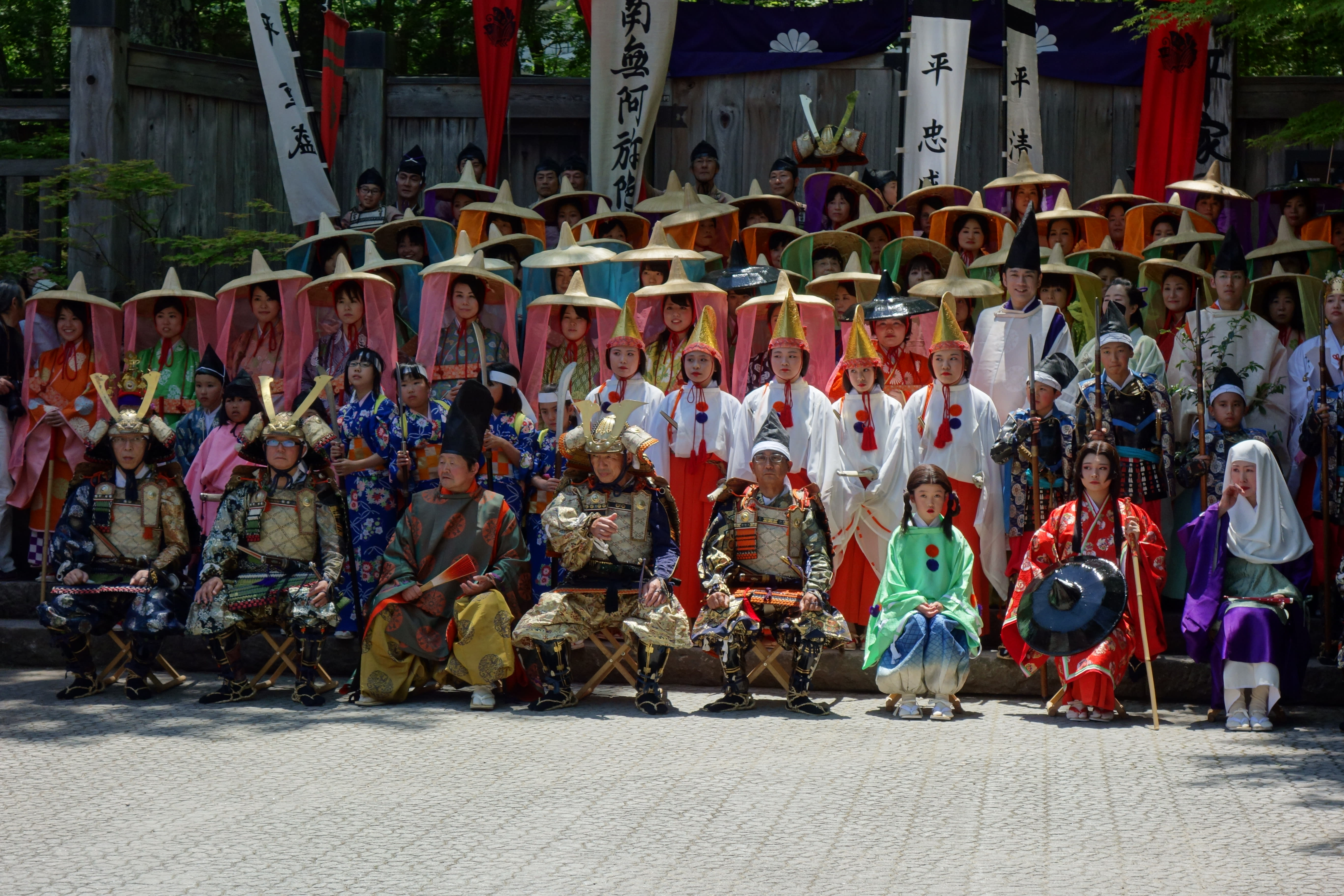
Japan
Japan is one of the most popular travel destinations in the world. It is a unique blend of traditional and modern, with many temples and buildings from the past co-existing with modern achievements in architecture and technology. Visitors can be immersed in Japanese history and culture one day and get a glimpse of the future through technological developments the next. Almost all of the historical sites are still used for their original purposes while remaining open to the public. The natural beauty of Japan can be seen all year. In addition, Japan has one of the world’s lowest crime rates which makes it ideal for travelers.
DESTINATIONS
RELATED ARTICLES
7 Best Day Trips from Kyoto
10 Largest Islands in Japan
7 Best Day Trips From Tokyo
10 Top Tourist Attractions in Japan
5 Most Beautiful Castles in Japan
10 Most Beautiful National Parks in Japan
12 Most Beautiful Volcanoes in Japan
17 Best Places to Visit in Japan
5 Best Day Trips in Japan
9 Most Amazing Hotels in Japan
9 Most Beautiful Regions in Japan
Exclusive Member of Japan Travelers Travel Guide
Ogushi Natural Park|大串自然公園
 This peninsula juts out into the Seto Inland Sea, at the northern most part of Sanuki city. The park has a total area of 100 ha, and there are various facilities clustered around the central grassy plaza. This is a leisure spot where you can experience ocean, mountains and wind, in a beautiful natural environment.
This peninsula juts out into the Seto Inland Sea, at the northern most part of Sanuki city. The park has a total area of 100 ha, and there are various facilities clustered around the central grassy plaza. This is a leisure spot where you can experience ocean, mountains and wind, in a beautiful natural environment.
Details
| Address | Oda, Sanuki, 769-2300 Kagawa |
|---|---|
| Hours | – |
| Closed | – |
| Admission Fee | – |
| TEL | – |
| FAX | – |
| Parking | (Cars) Yes (Buses) Yes |
| Free Wi-Fi | No |
| Toilet | Yes |
| Best Season | Spring / Summer |
The perfect spot to enjoy Sanuki wine


‣ The Sanuki winery is the only wine-producing facility in the four prefectures of Kagawa, Tokushima, Ehime and Kochi.



 ‣ ‘Sanuki Wine’, the authentic Kagawa wine, is produced and sold here, and you can observe the production facilities.
‣ ‘Sanuki Wine’, the authentic Kagawa wine, is produced and sold here, and you can observe the production facilities. An experience you won`t find anywhere else…
An experience you won`t find anywhere else…
○ Superb view spot



○ There is an outdoor concert area called Theatron, that can accommodate up to 5,000 people.
Access Information
| Train | ●JR Shido Station Approx. 30 minutes from JR Takamatsu Station on the Kotoku Line. Approx. 15 minutes from JR Shido Station by car. |
|---|---|
| Car | ●Shido IC Approx. 15 minutes from Shido IC by car. |
| Air | ●Takamatsu Airport Approx. 50 minutes from Takamatsu Airport by car. |




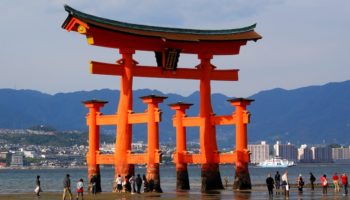

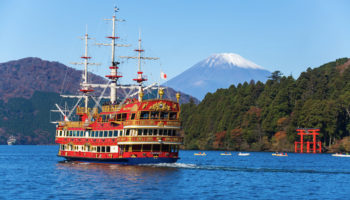



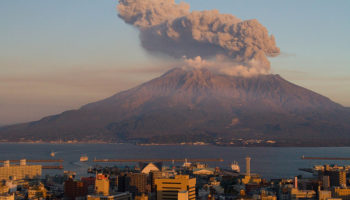

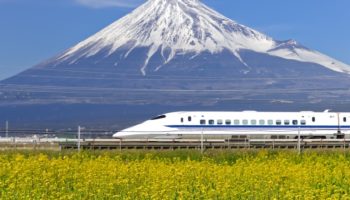

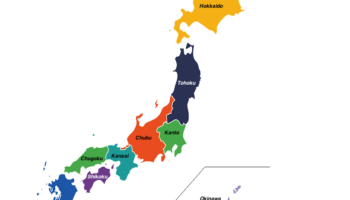






0 Comments